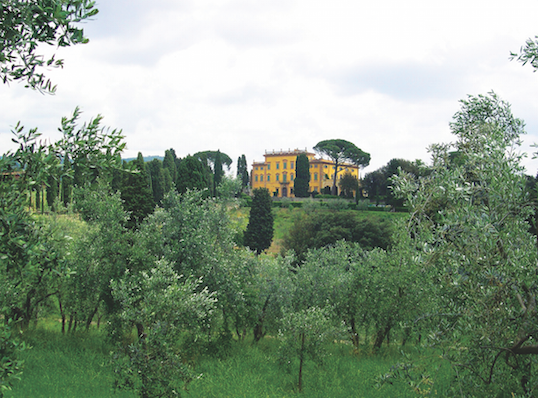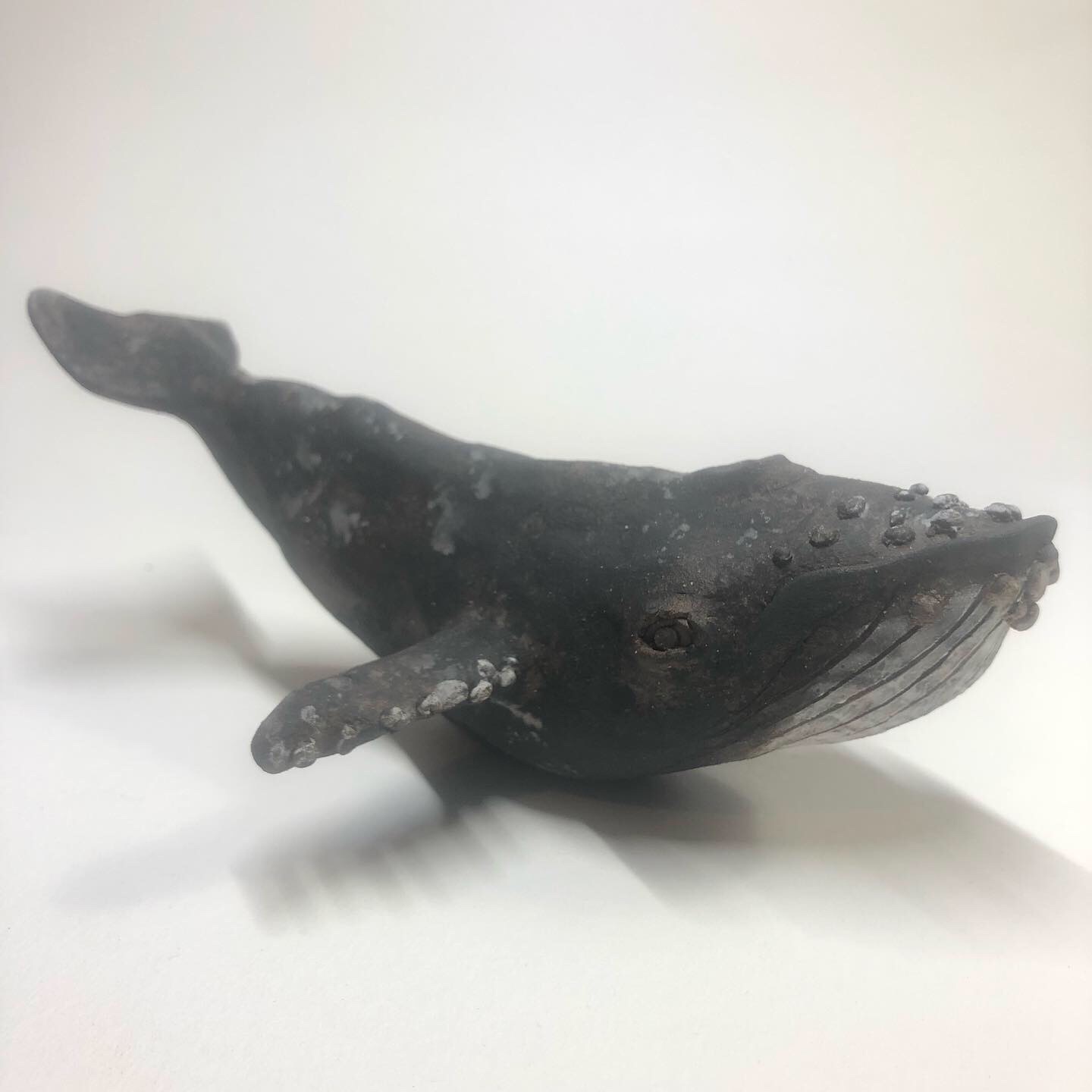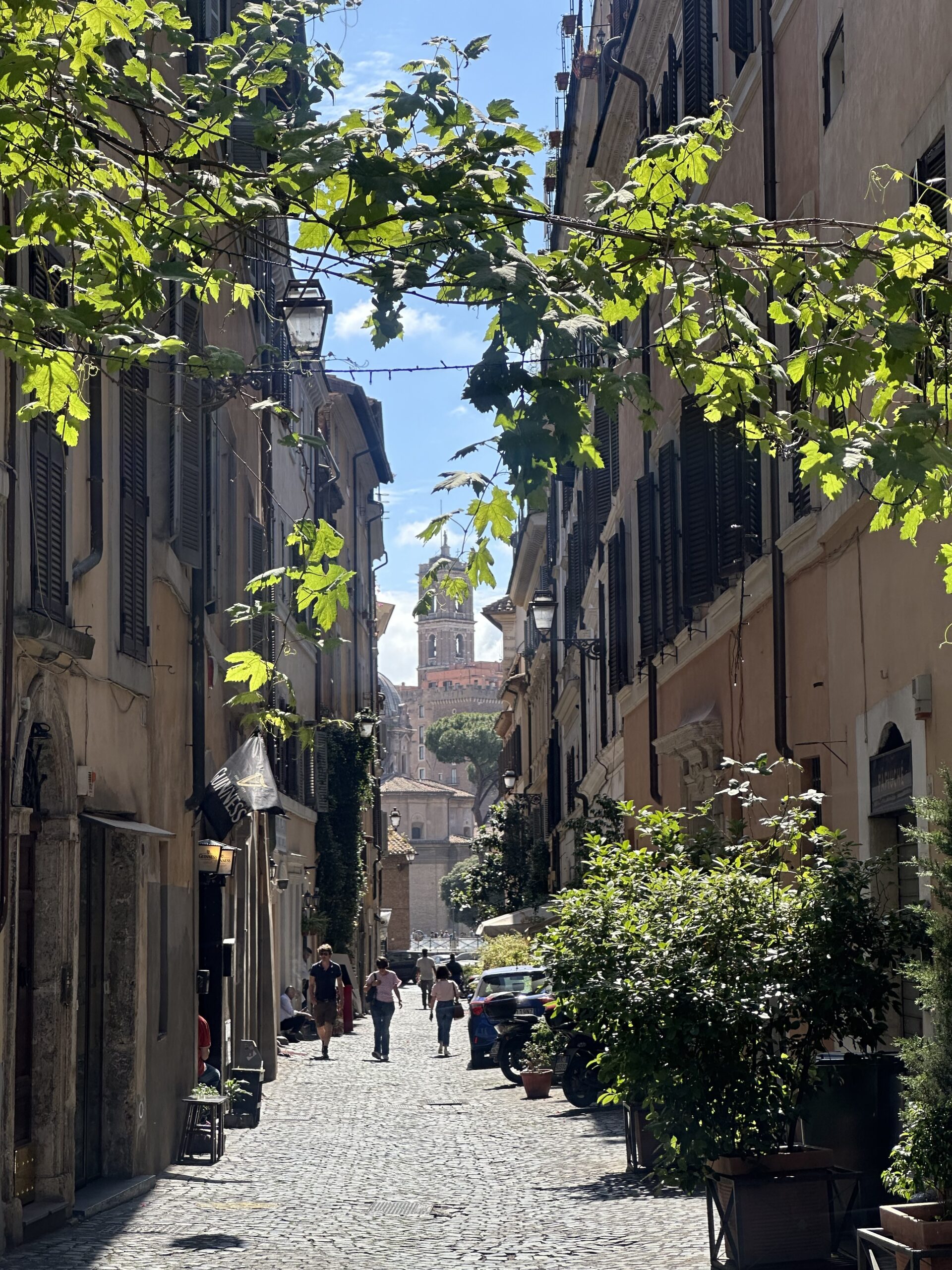By MORGAN ADAMS

I
I take the number 25 bus from Piazza San Marco north into the hills and get off at La Pietra—a stone marking one Roman mile from Florence. Behind the imposing gate, Villa La Pietra waits at the top of the long drive lined with Tuscan cypress trees.[1]This fifteenth-century villa is the centerpiece of a fifty-seven-acre estate of Renaissance-revival gardens,a vast art collection, a library of over twelve thousand volumes, and olive groves with views of the Duomo. In the twentieth century, Villa La Pietra was home to Hortense and Arthur Acton, Anglo-American collectors with eclectic interests. The Villa is filled with their collections. Curated, but not in the manner of a museum, it is a very personal space. Panel paintings sit next to seashells; books are found in nearly every sala and saletta, in grand bookcases, desks, and small cupboards. The Actons’ son, Sir Harold Acton, bequeathed the estate to New York University in 1994, and NYU maintains the house, collections, and grounds in the Acton style.
In 2010, a remarkable discovery was made in the library of Villa La Pietra. A previously unnoticed book with a worn blue paper cover was found in a cabinet during an inventory of the library. About the size of a school binder, it is a sketchbook filled with drawings in brown and black inks, black chalk, and vivid washes of watercolor. The drawings fill the pages and run off the edges: double-page spreads show nearly overwhelming Baroque palace courtyards, fanciful gardens and gazebos, grand temples, romantic ruins, dark grottoes and prisons. Turning the pages is dizzying. Colonnades recede to infinity, and courtyards climb to impossible heights. Rather than drawn from life, the drawings appear to be designs for theater sets. The occasional note suggests the scene: “Stanza reale,” “Cortile,” “Carcere.”
![[Racolta di Diversi Pensieri di Schene Fatti e Composti da Mr. Chamant]. Pen and brown ink, watercolor, black chalk on paper. Sketchbook: 296 mm x 227 mm x 25 mm. After conservation treatment. ©New York University, Acton Collection, Villa La Pietra, Florence.](http://www.thecommononline.org/wp-content/uploads/2015/11/adams_photo_1_upload.png)
[Racolta di Diversi Pensieri di Schene Fatti e Composti da Mr. Chamant]. Pen and brown ink, watercolor, black chalk on paper. Sketchbook: 296 mm x 227 mm x 25 mm. After conservation treatment. ©New York University, Acton Collection, Villa La Pietra, Florence.
![“Atrio del Tempio di Apollo,” folio 39 recto, [Racolta di Diversi Pensieri di Schene Fatti e Composti da Mr. Chamant]. Pen and brown ink, watercolor, black chalk on paper. 290 mm x 215 mm. ©New York University, Acton Collection, Villa La Pietra, Florence.](http://www.thecommononline.org/wp-content/uploads/2015/11/adams_photo_2_upload.png)
“Atrio del Tempio di Apollo,” folio 39 recto, [Racolta di Diversi Pensieri di Schene Fatti e Composti da Mr. Chamant]. Pen and brown ink, watercolor, black chalk on paper. 290 mm x 215 mm. ©New York University, Acton Collection, Villa La Pietra, Florence.

Villa La Pietra © Katherine Sanderson
Traces of paint and ink on the cover, as well as grimy smudges in the corners of the pages, make it clear this book was well used.
Upon the discovery of the sketchbook, it was immediately apparent that these drawings represented something special and important; the craftsmanship in their execution is astounding. The artist carefully built up the images, laying out the design and perspective in black chalk, then drawing in ink with a very fine pen—sometimes working with a compass and straightedge, sometimes working freehand—and finally giving the drawings body with washes of watercolor. In this magnificent temple atrium, every detail is accounted for, even the subtle play of light and shadow in the windowsills. The artist drew not only the architecture but also the atmosphere.
An inscription at the top of the first page (“Racolta di Diversi Pensieri di Schene Fatti e Composti da Mr. Chamant”) and a small note on the last page (“decembre 1748”) are the only clues as to the creator and date of the sketchbook. “Mr. Chamant” is Jean-Joseph Chamant (1699–1767), a French architect, draftsman, painter, and theater set designer who trained first in Lorraine and later in Italy with the preeminent theater designer Francesco Galli Bibiena (1659–1739). Extraordinarily itinerant, Chamant worked throughout the Holy Roman Empire, from Florence to Vienna, Brussels to Šaštín, Slovakia. His name is known to us today primarily because of his work for the imperial court. Early in his career he was patronized by the Duke of Lorraine, Francis Stephen (1708–1765), who would go on to marry the Archduchess of Austria, Maria Theresa (1717–1780). Through this marriage, Francis would become the Grand Duke of Tuscany and later the Holy Roman Emperor Francis I. Chamant followed the Duke’s ascent from Lorraine to Florence, and eventually to Vienna.
Among his contemporaries, Chamant was renowned for his theater set designs and palace frescoes. Archival documents tell us that Chamant designed a structure for fireworks at the wedding of Francis and Maria Theresa in 1736 and that he painted large canvases celebrating the life of Emperor Charles VI displayed at the Emperor’s funeral in the San Lorenzo basilica in Florence in 1741. Unfortunately for us, Chamant’s work was inherently ephemeral, and very little of the artist’s oeuvre survives today.[2] The sketchbook found at the Villa La Pietra, containing more than one hundred drawings, is all the more significant: it presents the most extensive surviving collection of drawings by the artist. Turning the book’s pages, one is taken back in time and space, transported to the Habsburg court, to eighteenth-century Vienna and Florence, to a time of imperial spectacle.
II
After the sketchbook was discovered at the Villa La Pietra, I was part of a team from NYU’s Institute of Fine Arts Conservation Center that traveled to Florence to examine it in 2011. Working in an attic space renovated to serve as a small conservation studio, paper conservator Margaret Holben Ellis, book conservator Maria Fredericks, and I made a detailed study of the sketchbook, hoping to learn more about its origins, history, and use, and to determine its preservation needs.
Over 250 years old, the sketchbook’s binding was severely compromised. The threads holding the pages together were breaking, many pages were loose and tearing at the gutter, and the attachment of the cover was very weak. In this condition, it was impossible to handle the book without the risk of causing additional damage: just turning the pages stressed the fragile sewing and paper at the spine. And yet the drawings themselves were in very good condition. Aside from the wear typical of working drawings that are much used and handled, the paper remains strong and flexible and the media are vivid, having been protected from light while the book was closed. To make this exceptional object available for research and exhibition, and to ensure its long-term preservation, a major conservation treatment was required. It was necessary to bring the book to New York.
After nearly two years of planning and international negotiations, I picked up the sketchbook outside customs at JFK airport in June 2013 and brought it to the Thaw Conservation Center of The Morgan Library & Museum. In treating the sketchbook, I hoped to stabilize and strengthen the binding so that the book could be handled and the drawings could be seen. As a practice, conservators disbind a book only when there is no other option, as it represents a major and irreversible intervention into the object. (And a central tenet of conservation ethics is reversibility.) In the case of the sketchbook, disbinding was the only way to make the mends that the paper and binding required if the book was going to be handled. After reinforcing the pages’ spine folds with thin, nearly invisible Japanese tissue, it was possible to resew the book, using the original sewing holes. Tears in the blue cover paper were mended, and the cover was reattached to the book block. After treatment, the sketchbook’s pages turn fluidly and the book is secure in its cover. The sketchbook was returned to Villa La Pietra in 2014, and Chamant’s lost drawings are now available for both research and exhibition.[3]
III
In treatments such as this one, conservators get to play archaeologist—strata of paper, thread and adhesive, the positions of holes and stains, tears and scars, all sing to the trained eye in a cacophony of historical evidence. It is a thrilling, but weighty, experience. Just as archaeology is simultaneous discovery and destruction, this binding would never be taken apart for the first time again. I had to proceed at a snail’s pace and document everything. Stains that seem insignificant during disbinding might be crucial clues later. Often patterns emerge only after all of the evidence is unveiled. In this treatment, sifting through the evidence led to exciting discoveries about the history of the sketchbook and, in turn, the history of the artist.
Before the book was disbound, it was unclear whether it was an album of drawings compiled after the artist drew them, or whether the artist made the drawings in a bound sketchbook. With access to the spine, it was clear that the media—pen lines and watercolor washes alike—all stopped short of the gutter, the part of the page that is inaccessible when a book is bound. Additionally, the text block is composed of a single type of paper, bearing the same watermark throughout; it is a sun with eyes and a nose, characteristic of Italian paper mills. Thus we know that this was a prefabricated blank book, like a sketchbook you might buy today. This information shapes the interpretation of the collection of drawings and the working methods of the artist—the act of drawing in a bound book has different parameters than drawing on a free sheet of paper. It also prompts questions about how the book was used: Was it a sample book to show patrons? Was it an idea book to share with collaborators? Was it a personal record of specific projects?
During the treatment I also discovered that the sketchbook had been re-bound multiple times. It was resewn once after the artist started drawing in it—the second set of sewing holes is pierced through areas where the artist had already laid down a wash of watercolor. Paint on some of the sewing thread indicates that the artist continued working in the book after it was re-bound. At some point in the eighteenth century, the second cover must have become worn or damaged, and the book was covered for a third time—now in the blue “paper case” binding that was found at the Villa. This is a specific binding structure usually associated with Germany and Northern Europe. Each time the book was re-covered, new endsheets were added. (These are the blank pages at the front and back of a book.) The first rebinding used paper with a watermark of a rampant lion standing on a plinth, holding an orb and a scepter, linking it to eighteenth-century Austrian paper mills. The second rebinding used paper watermarked with the letters “I.T.E.v.T.”—the initials of Johann Thomas, Edler von Trattner (1717–1798), a “Buchdrucker, Verleger und Buchhändler” (printer, publisher, and bookseller) who worked with the imperial court in Vienna in the second half of the eighteenth century.
Extraordinarily, the seemingly anonymous strata of physical evidence left by the use and repair of the sketchbook trace the artist’s travels across Europe. Between the 1720s and the 1740s, Chamant was working variously in Italy and France. During this time he acquired a blank sketchbook composed of Italian paper, perhaps from a stationer’s shop in Italy. When the book needed to be re-bound, Chamant was spending more time in Northern Europe, and the binders who refurbished the sketchbook were likely Northern European, as suggested by the Austrian paper endsheets of the second binding. Finally, the blue paper case and the Edler von Trattner endsheets strongly suggest that the third and final cover was applied in Vienna, where Chamant died in 1767.
When I initially learned that Chamant had worked in Florence, I wondered whether the sketchbook had ever left the city—perhaps the book remained with a colleague or student? The physical evidence in the binding tells a very different story: this book was the artist’s faithful companion, traveling with him across Europe to the end of his career.
IV
It was an unexpected privilege to vicariously follow the artist through the eighteenth-century Holy Roman Empire during this conservation treatment. In the book’s strengthened condition, the drawings will be a delight to anyone who sees them for many years to come.
Even after working with the sketchbook for years, I am still struck by the effortless beauty of these drawings. With only a couple of pen strokes and the most delicate watercolor washes, Chamant created the illusion of magnificent edifices. In the palace atrium drawings, every surface is embellished and the multi-story colonnades overflow with ornament. Your eye dances across statues, marble columns, innumerable acanthus volutes, garlands, and figural reliefs. The architecture overwhelms, but the play of light captures your attention and pulls your gaze across the picture. The two-point perspective makes the scene at once immediate and expansive, driving the colonnades toward you and also sending them deep into the page, leaving you to wonder what is waiting in the wings.
With the treatment complete, the study of the drawings can begin in earnest. Chamant’s virtuoso designs await examination by art historians and theater historians. Perhaps someday we will learn what tragedies and comedies played out in these scenes.
Morgan Adams is a conservator for special collections for the Columbia University Libraries. She holds an MA in art history and an advanced certificate in conservation from the Conservation Center, Institute of Fine Arts, New York University, and a BA from The University of Texas at Austin. Prior to her current position, she worked in the conservation departments at The Morgan Library & Museum, The New York Academy of Medicine, New York University Library, and the University of Michigan Library.
[Purchase your copy of Issue 10 here.]
[1]. Many thanks to Ellyn Toscano and Francesca Baldry of Villa La Pietra; Margaret Holben Ellis, Michele Marincola, Jean Dommermuth, and Cat Lukaszewski of the New York University Institute of Fine Arts Conservation Center; Maria Fredericks, Reba Snyder, and Frank Trujillo of the Morgan Library & Museum Thaw Conservation Center; and Andrea Bell, Esther Bell, Peter Bower, and Andrew Adams.
[2]. The Cooper Hewitt, Smithsonian Design Museum in New York owns two of his architectural drawings, a small number survive in French libraries, and some of his frescoes painted between 1750 and 1760 in Slovakia can still be seen today in a Capuchin monastery in Holíčand the basilica minor in Šaštín.
[3]. A short film about the sketchbook, produced by the Institute of Fine Arts, New York University, “Jean–Joseph Chamant: The Lost Sketchbook,” is available at www.vimeo.com/ifa/chamant.




